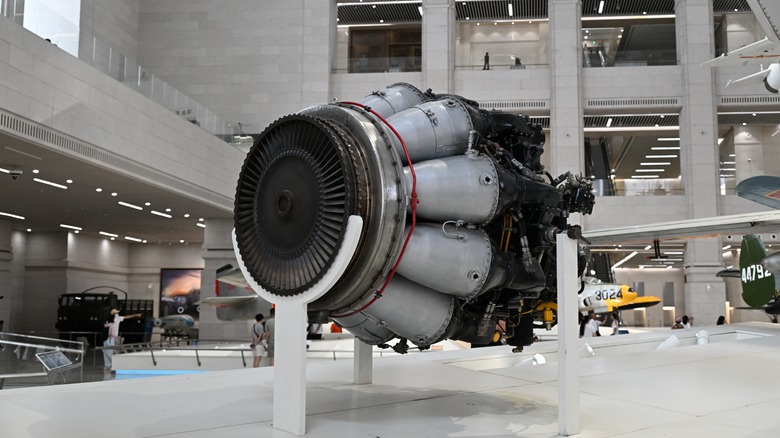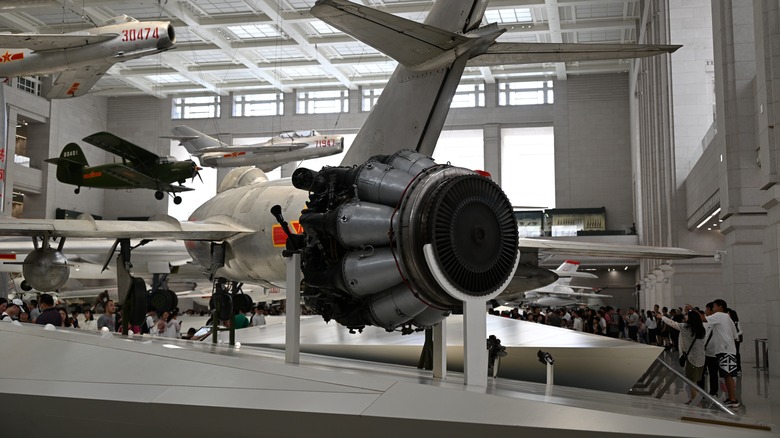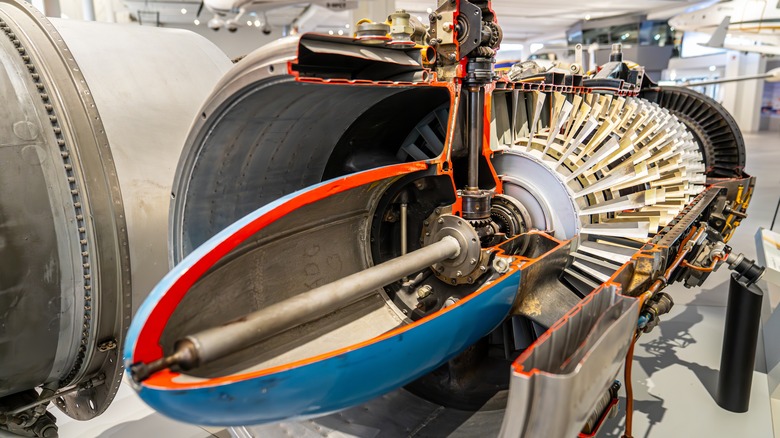Who Makes The Engines Used In Chinese Fighter Jets?
While recent years have seen more information about the Chinese military become common knowledge, there is no denying that a lot is still unknown about its military might. Most recognize one of the most heavily armed tanks in the world, the Type 99 tank, and its Shenyang J-35A fighter jet, whose multirole capabilities pit it against the U.S.'s very own F-35 Lightning II. But not many can tell you who makes most of the country's military vehicles or where they are manufactured. Even fewer people know who makes China's military vehicle parts, such as engines for its fighter jets.
As one of the world's oldest countries, China has had time to establish itself as a leader in innovation. Many of its sectors, from transportation to technology, demonstrate what the country can achieve. So, it's only right that it would join the likes of the U.S. when it comes to developing jet propulsion systems for its military, which the country does through the Aero Engine Corporation of China (AECC).
The AECC is state-owned, meaning the Chinese government is essentially responsible for manufacturing and servicing engines for its military. This is unlike in the U.S., where aerospace companies, such as Pratt & Whitney are responsible for outfitting the F-22 Raptor and F-35, take on the role of providing engines for the country's fighter jets.
A lot of the jet technology was reverse-engineered
China stepped into the fighter jet game in 1956, when its first jet-powered interceptor, the Shenyang J-5, made its maiden flight. The jet was heavily inspired by the Soviet Mikoyan-Gurevich MiG-17 and featured a single Wopen WP-5 turbojet engine capable of 7,600 pound-force. Over the years, the country would build more fighter jets to serve in its military.
However, it would also face significant challenges, especially when it came to its engines. The interesting part is that some of China's fighter jet technology is either stolen or reverse-engineered intellectual property from other countries like Russia.
China has been working to unravel the secrets of jet technology for a while now, even going as far as trying to acquire a controlling stake in Ukrainian company Motor Sich, which is known to manufacture engines for jets. With a growing need to have home-designed and built jet engines for its fighters, the country established the Aero Engine Corporation of China (AECC), which is an amalgamation of several entities from the Chinese jet engine industry.
AECC has 72,000 employees and builds several propulsion systems
The AECC itself is a company with a registered capital of $7.5 billion, which is by no means anything to scoff at. As expected, the company has focused on meeting the Chinese military's fighter jet engine needs, with engines like the WS-15 undergoing research and development.
The company boasts three main boards, 27 directly affiliated units, and a massive 72,000 employee count. Other than building jet engines for the country's military, AECC is also heavily involved in designing, manufacturing, and maintaining several other propulsion systems, such as gas turbines and piston engines. It also develops engines for large ships, civilian aircraft, and generator sets.
For decades, China has depended heavily on foreign engines to power its fighter jets. However, the AECC is working diligently to change that, investing significant time and resources into researching and developing turbojet, turbofan, turboshaft, and turboprop technologies, all aimed at transforming how the country equips its aircraft.


